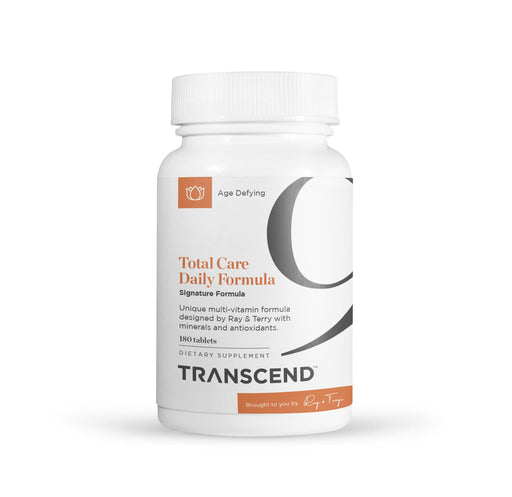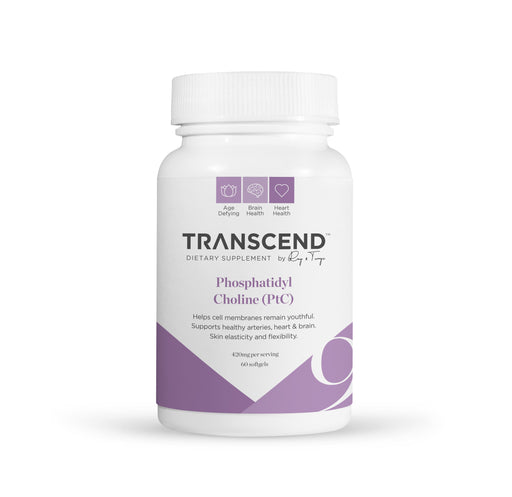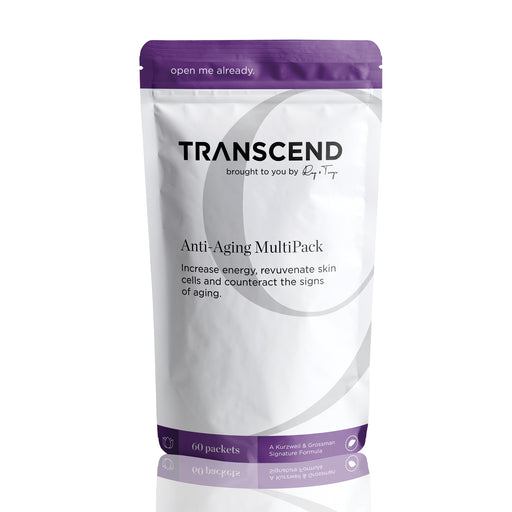
Total Care Daily Formula
A Kurzweil + Grossman Formula Optimal vitamin/mineral foundation Includes three powerful antioxidants Supports overall health and wellness Unique ...
View full details
Not long ago medicine was basically a hit or miss affair. Scientists discovered drugs with benefits but also many side effects. And sometimes these unexpected side effects helped treat other ailments. Viagra, for example, was accidentally discovered by Pfizer during a clinical trial of a drug that was supposed to lower blood pressure. To their surprise, despite lackluster results in treating high blood pressure, many of the patients refused to return their pills at the end of the study. This caught Pfizer’s attention. When they looked into it further they found the drug was much better at inducing “very hard erections” than anything else. At that time, in the 1990s, scientists didn’t have the means to design medical interventions on computers. Today however, that has all changed thanks to the Human Genome Project. Launched in 1990, the project goal was to identify and map all human genes, which it achieved in 2003 (early and under budget). Decoding the first genome cost over one billion dollars. It now costs less than $600 dollars. Since then, every aspect of what we call biotechnology — understanding the genome, modeling it, simulating it, and reprograming it — has continued to advance exponentially. We now have the genetic data and tools to reprogram our biology in the same way that we reprogram computers. If you ask Ray Kurzweil, he’ll tell you that genes are software programs. It’s not a metaphor. They are sequences of data.
The role of mRNA in preventing and treating disease:
The idea of creating genetic code to fight diseases has been around for 30 years, but has only recently come to fruition in the Moderna and Pfizer Covid-19 vaccines. By now, we are all familiar with the images of Covid-19’s spikey outer layer. Scientists identified the genetic code responsible for the virus’s spike proteins and then created duplicate synthetic messenger RNA (mRNA) to instruct our cells to produce these spikes. Note that the spikes alone are not harmful to our bodies -- they are simply the mechanism that allows the virus to break into healthy cells and spread. By creating synthetic mRNA scientists set off a sequence of events to help our bodies fight Covid-19: 1) mRNA provides the genetic instructions needed for the body to create Covid-19 spike proteins, 2) as the body begins to produce the spike proteins our immune system recognizes them as a threat and in response, produces antibodies that attach to the spikes and render them useless, 3) this ultimately takes away the ability of the Covid-19 virus to penetrate other cells. This breakthrough in genetic engineering has provided a preprogrammed genetic blueprint that tells our bodies how to fight Covid-19.
The future of mRNA vaccines:
One of the key benefits of the synthetic mRNA platform is flexibility. mRNA can theoretically engineer any protein to boost our immune system against any disease. Once created, no matter what genetic code it holds, mRNA can safely enter our bodies inside lipid nanoparticles, small bubbles of fat that encase and protect it from breaking down too quickly. These lipid nanoparticles have the potential to be rapidly programmed by scientists as if they were software, opening up a whole new world of disease treatment. This is why mRNA has been described as a skeleton key that can potentially unlock all diseases.
This is especially important as scientists begin to tackle the Covid-19 Omicron variant, first identified by the World Health Organization on November 24, 2021. The genetic code of all viruses, including Covid-19, mutates over time. The Omicron variant has about fifty mutations, including more than thirty within the outer spike proteins. Compare this to the Delta variant which has ten mutations. With each new mutation, variants become more difficult for the immune system to recognize. Remember, current mRNA Covid-19 vaccines provide a blueprint for antibodies based on the original spike proteins, not the 30+ mutated versions unique to Omicron. Scientists are now urgently studying the impact these mutations might have on the vaccine’s ability to recognize and fight them. On November 28, 2021, Dr. Jesse Bloom, an evolutionary biologist at the Fred Hutchinson Cancer Research Center in Seattle, shared her opinion with the The New York Times, “Based on lots of work people have done on other variants and other mutations, we can be pretty confident these mutations are going to cause an appreciable drop in antibody neutralization.” She and her colleagues are preparing to test blood from fully immunized people against a synthetic version of the Omicron variant which is expected to bring results within ten days. Depending on the outcome of this and many other studies, scientists may reprogram the mRNA vaccines with Omicron’s updated genetic code in order to create a more full-proof Covid Vaccine 2.0. Meanwhile, the breakthrough of mRNA vaccines will impact the world far beyond Covid-19, as research is underway to create similar vaccines for rabies, influenza, Zika, and cancer.
Unlocking the mystery of genetic diseases:
Nearly all functions of the body are carried out by proteins. They are the building blocks of life and their unique individual shapes dictate the success or failure of all medicine. If we can figure out how proteins take on their three dimensional shapes, we will be able to synthetically produce proteins with a desired function to treat and cure diseases. Being able to predict the shape of a protein – what scientists call the “Protein Folding Problem” – has been one of the grand challenges of science. Only a small number of researchers have attempted to master the intricacies of predicting three-dimensional protein folding and they haven’t been very successful.
When AI and biology become one:
Just recently, in the past five years, we have seen exponential gains in predicting the shapes of proteins. In 2016 Google’s DeepMind created AlphaFold, a protein-folding-predicting AI, by training it on 170,000 proteins from a public repository for two weeks. It was then able to predict each protein structure. In 2018 AlphaFold was compared to the leading protein-folding predictors and placed a prominent first out of ninety-eight competing programs, having accurately predicted the shape of 60% of the proteins in the test. In 2020 AlphaFold 2 accurately predicted the three dimensional shapes of almost 90% of the proteins in the test. This made international news. If we can predict protein structures, medicine will be radically transformed. Scientists will develop proteins with specific functions, for example proteins that will stimulate our immune system to fight cancer.
Our take-away:
Successful genetic engineering has shown that medicine is inherently about finding patterns and relationships in biochemistry. This pattern-recognition is the natural strength of deep learning AI. As more advanced neural networks gain access to ever-richer data, AI will be able to identify those hidden relationships more clearly. Ultimately, we will rely on AI driven simulations rather than human testing to find the best medical solutions. And as our biology simulators expand through the 2020s, they should begin to solve all biological problems. With an accurate simulation, we will be able to find the solution for any disease.

A Kurzweil + Grossman Formula Optimal vitamin/mineral foundation Includes three powerful antioxidants Supports overall health and wellness Unique ...
View full details
A Kurzweil + Grossman Formula Antioxidant and anti-aging protection Increase energy Fight aging Decrease wrinkles Cellular integrity Anti-Aging...
View full details
Improve skin elasticity Cell membrane flexibility Support memory function Healthy brain tissues Phosphatidylcholine (PtC) is a flexible phospho...
View full details
A Kurzweil + Grossman Formula Continued Synergy between Science and Convenience Convenient dosage packets Top anti-aging products Increase energy...
View full details
Leave a comment